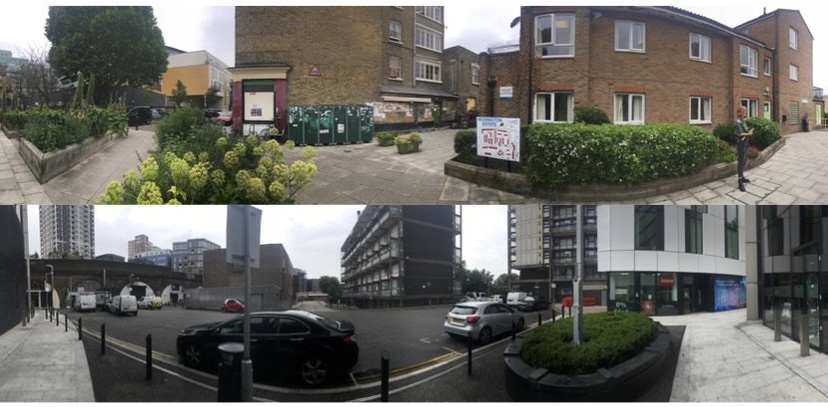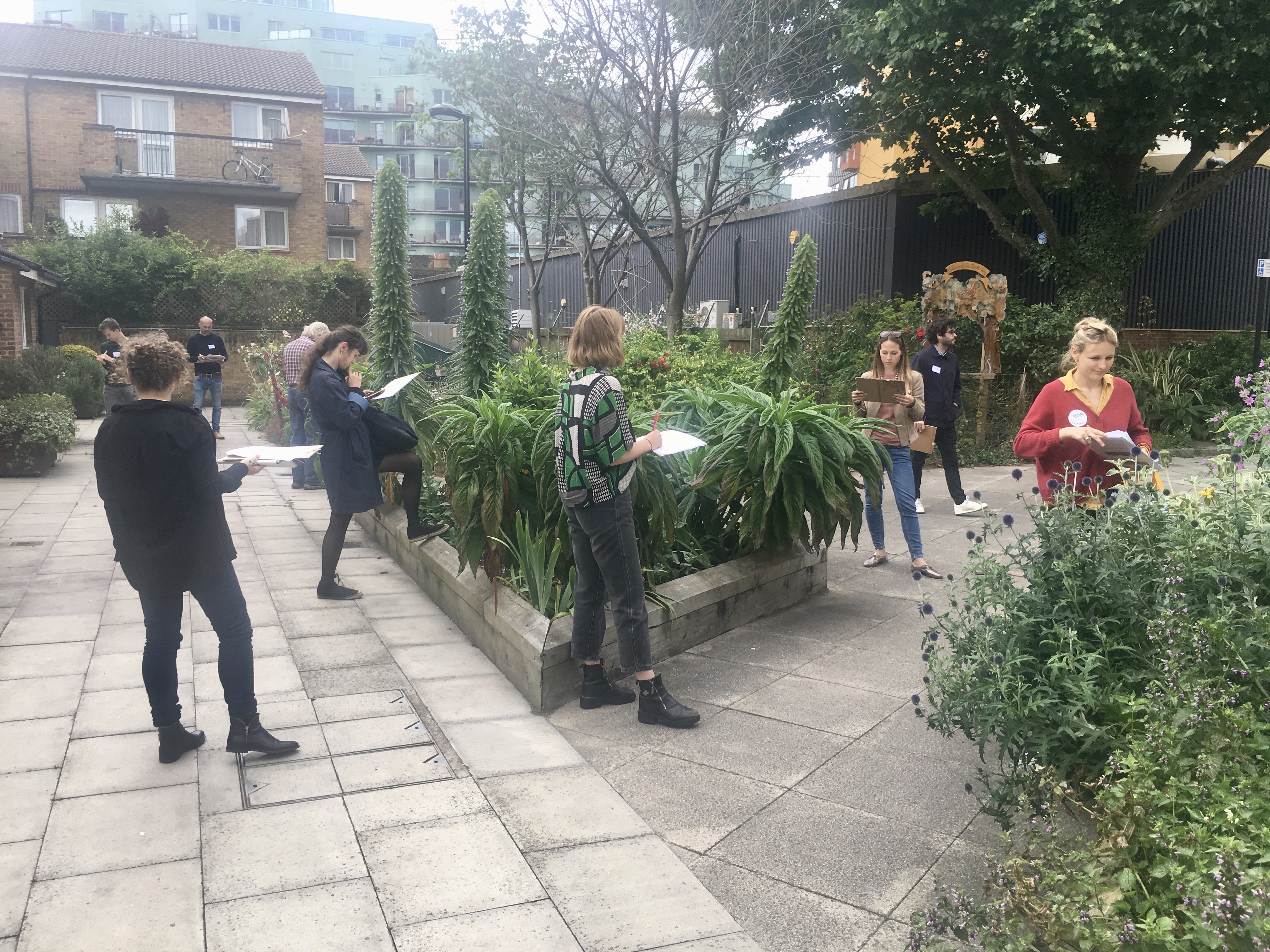
What makes a boundary? How we circumnavigate London is often imagined through its hard materiality of bricks and roads, staggered by open, green spaces and meandering waterways. Yet the sensory experience of moving through the city plays a significant role in how we percieve place, define neighbourhoods, and establish routes and routines.
In mid June, Social Life hosted a workshop as part of the London Festival of Architecture, which aimed to explore how sight, smell and sound impact our perceptions of boundaries.
Our approach drew closely from a toolkit developed by Saffron Woodcraft and Connie Smith at UCL's Insitute for Global Prosperity - the 'Sensory Notation Toolkit' - which was created with the intention for 'researchers to become alert to their different sense and how these are stimulated by particular environments.'
Workshop participants walked with us on a short route around Elephand & Castle. At each stop we asked participants to record their sensory stimulation on a scale of 1-5 for each of the six sense: visual, aural, kinetic, thermal and chemical. We used a visual sensory chart to capture the data to understand what the concurrent themes were for each space and overall which space had the highest and lowest level of sensory stimulation.
Building on Social Life's earlier work on sensory stimulation and psychgeography in our local area, our 2017 'Feeling of the Place' project, the workshop aimed to look more closely at the relationship between our sense and how this guides our perception of boundaries. The sensory walk was an exercise on connecting sights, smells and sounds as elements of boundary making and unmaking.
Two boundaries were chosen for the exercise, Strata Tower by Elephant and Castle roundabout and a pedestrial barrier in the Newington Estate close to Peacock Yard where Social Life is based. Participants were asked to stop on either side of the 'boundary' and record their sensory stimulation. The stops differed dramatically. Whilst one was located in the middle of a blooming community garden others were located right at the foot of Strata Tower, surrounded by the hustle and bustle of urban life. They were however only a short walk apart.
The responses were fairly predictable. Participants noted feeling unwelcome and feelings of unpleasantness in areas that were less human scale and contained less greenery. Aural stimualtion - negative or positive - scored highly for many participants with many connecting unpleasant feelings with wind, loud noises and also temperature.

Conversely participants noted feelings of 'ambience', 'comfort', and 'relaxation' in spaces that were more human scale and of intricate urban nature. The community garden scored highly with positive sensory stimulation with participants noting it was 'ambient', 'musical', 'safe', 'textured', and 'relaxing.' Conversely the Strata Tower scored negatively across the board with participants noting being 'stressed', 'overwhelmed' and 'uncomfortable.'
After the sensory walk we hosted a discussion back at the Social Life offices. One participant noted that while often percieved as a negative, boundaries can help areas feel welcoming and at a human scale. By choosing to perceive a boundary as a 'boundary', something that divides, we can miss an opportunity to create a friendly threshold between different urban spaces. Another participant noted that we tends be more perceptive when there are fewer sensory inputs, and that in quieter or 'softer' places they had "a better conclusion of where they we were."
Following on from this point was the important recognition that in quieter spaces we have a "choice to engage your sense" however in places that were louder and overload you with sensory stimulation, you don't - "you are just thrown in." Another participant noted that initially upon arriving at one of the boundaries they "didn't percieve it as a boundary... but after standing in the space my perceptions changed."
Participants told us they enjoyed having a 'reason' to stop, stand and absorb the urban environment, which we rarely give ourselves the opportunity to do in our everyday lives. By stopping and taking time to reflect on how a space makes us feel, participants had a chance to experience the urban environment in an alternative way. This offered a chance to reflect on the qualities which make certain environments appealing, as one participant noted "how it looks is what takes you to a place but how it feels is what makes you stay" - and we couldn't agree more.